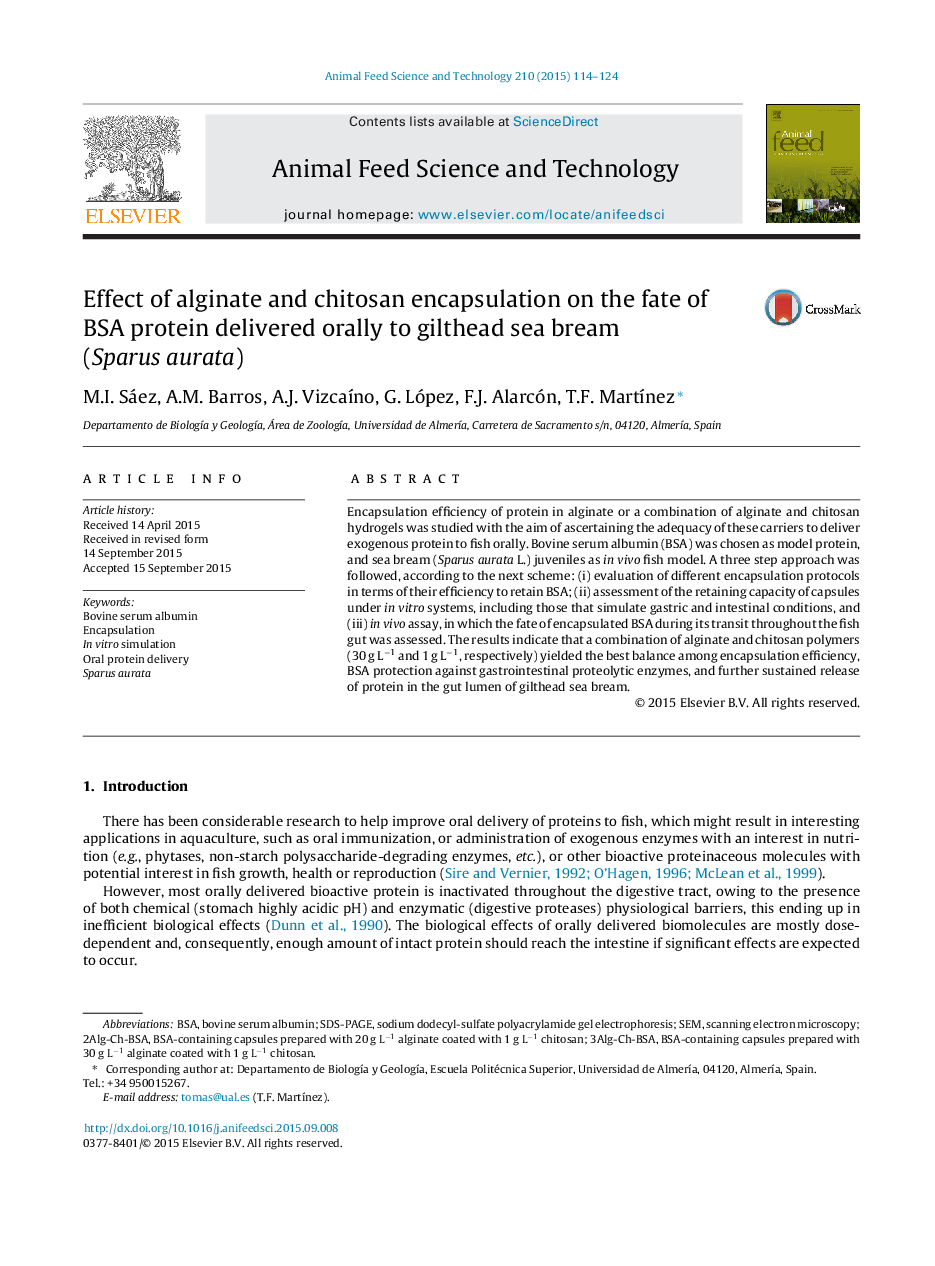| Article ID | Journal | Published Year | Pages | File Type |
|---|---|---|---|---|
| 2419321 | Animal Feed Science and Technology | 2015 | 11 Pages |
•BSA protein is readily inactivated in the digestive tract of fish.•Encapsulation efficiency of protein in alginate–chitosan hydrogels is close to 100%.•Alginate–chitosan hydrogels protect exogenous protein throughout its intestinal transit.•Alginate–chitosan beads release encapsulated protein in the intestine of fish.•Alginate plus chitosan hydrogels are suitable oral carriers for protein in fish.
Encapsulation efficiency of protein in alginate or a combination of alginate and chitosan hydrogels was studied with the aim of ascertaining the adequacy of these carriers to deliver exogenous protein to fish orally. Bovine serum albumin (BSA) was chosen as model protein, and sea bream (Sparus aurata L.) juveniles as in vivo fish model. A three step approach was followed, according to the next scheme: (i) evaluation of different encapsulation protocols in terms of their efficiency to retain BSA; (ii) assessment of the retaining capacity of capsules under in vitro systems, including those that simulate gastric and intestinal conditions, and (iii) in vivo assay, in which the fate of encapsulated BSA during its transit throughout the fish gut was assessed. The results indicate that a combination of alginate and chitosan polymers (30 g L−1 and 1 g L−1, respectively) yielded the best balance among encapsulation efficiency, BSA protection against gastrointestinal proteolytic enzymes, and further sustained release of protein in the gut lumen of gilthead sea bream.
